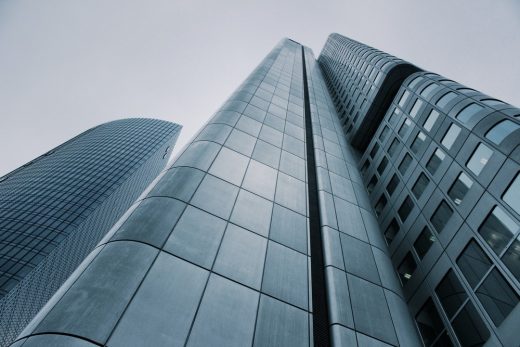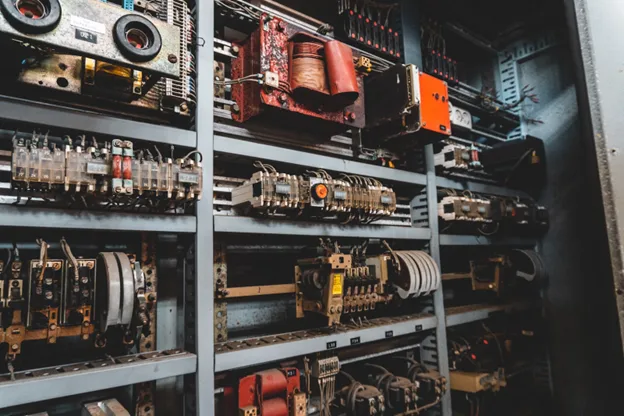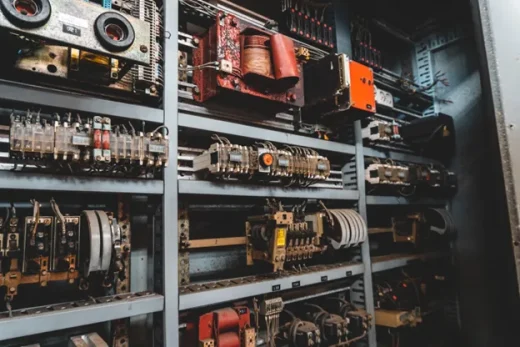Eco-friendly architecture, harnessing the power of dry-type transformers in sustainable designs
Eco-Friendly Architecture: Harnessing the Power of Dry-Type Transformers in Sustainable Designs
October 7, 2024
Eco-friendly architecture is increasingly becoming a cornerstone in sustainable development, aiming to minimize buildings’ environmental impact. One innovative approach within this field is the integration of dry-type transformers, which offer numerous benefits for sustainable building designs.
Dry-type transformers stand out because they rely on air for cooling instead of oil, making them a safer and more environmentally friendly alternative. This characteristic reduces fire risks and eliminates the possibility of soil and water contamination associated with oil spillages.
As such, dry-type transformers are an efficient and responsible option that aligns with the principles of sustainable architecture.
Incorporating these transformers into building designs highlights a conscious effort to reduce carbon footprints and energy consumption. Their compact size and adaptability make them ideal for various architectural applications, allowing seamless integration into diverse projects.
As the demand for sustainability grows larger, dry-type transformers represent a significant step towards advancing eco-friendly architectural practices.
Understanding Dry-Type Transformers
Industry reports state that the global dry-type transformer market had a value of USD 13.47 billion in 2023. This market is predicted to grow at a CAGR of 9.1 percent from 2024 to 2032.
This growth reflects a broader trend toward adopting eco-friendly solutions, driven by an increasing awareness of environmental impacts and a commitment to sustainable development practices.
As these transformers become more prevalent, their role in reducing energy consumption and enhancing building safety and efficiency remains pivotal.
Dry-type transformers are essential components in modern electrical systems. Unlike their oil-filled counterparts, dry-type transformers use air as a cooling medium, eliminating the need for liquid insulation. This fundamental difference offers significant environmental benefits. They reduce fire risks and eliminate the possibility of oil spills, making them safer and more eco-friendly.
Businesses and architects can contribute to a greener, safer environment by opting for dry-type transformers.
How dry-type transformers work
The core of a dry-type transformer consists of windings and a magnetic core encased in epoxy resin or other insulating materials. These components transfer electrical energy between circuits while maintaining electrical isolation.
Depending on the power rating, dry-type transformers have cooling mechanisms that include natural air cooling and forced air cooling. Typical applications of dry-type transformers span various industries, from commercial buildings to industrial facilities, demonstrating their versatility and efficiency.
Environmental benefits
Dry-type transformers offer substantial environmental advantages by using air instead of oil for cooling, significantly reducing fire risks and the potential for oil spills. Their adoption in architecture supports eco-friendly designs, enhances safety, and aligns with sustainability goals by promoting green, energy-efficient practices in diverse applications.
Integrating Dry-Type Transformers in Sustainable Building Designs
Integrating dry-type transformers into sustainable building designs is a forward-thinking approach that aligns with contemporary architectural trends. These transformers enhance energy efficiency and ensure optimal performance with minimal environmental impact.
ELSCO’s 2000 kVA transformer exemplifies sustainable electrical infrastructure, offering robust performance and environmental sustainability.
Steps to incorporate dry-type transformers
Incorporating dry-type transformers into building designs involves several steps.
- Conduct an energy needs assessment: Evaluate the building’s total energy requirements to determine the appropriate size and capacity of the transformer needed.
- Select the appropriate transformer: Choose a transformer that meets the specific power demands and aligns with the sustainability goals of the project.
- Plan the installation location: Identify an optimal installation site that facilitates proper air circulation and meets safety regulations.
- Design for integration: Ensure the design allows for seamless transformer integration, considering spatial constraints and aesthetic considerations.
- Implement safety measures: Incorporate effective safety measures, including proper ventilation and fire prevention protocols.
- Coordinate with electrical engineers: Collaborate closely to ensure the transformer installation complies with all technical and regulatory standards.
- Monitor and maintain: Establish a monitoring and maintenance schedule to ensure the transformer operates efficiently and remains energy-efficient over time.
Common challenges
Despite their advantages, incorporating dry-type transformers comes with its own set of challenges.
- Higher initial cost: Dry-type transformers generally have a higher upfront cost than oil-filled transformers, which can be a concern for budget-conscious projects.
- Limited power capacity: They may have limitations in power capacity, which can necessitate using multiple units in large-scale projects.
- Cooling efficiency: While they are safer, dry-type transformers’ cooling efficiency can be less effective than that of oil-filled transformers, potentially affecting performance in high-demand applications.
- Size constraints: Their size and weight may pose issues in installations where space is limited or structural support is a concern.
- Noise levels: Dry-type transformers may produce higher noise levels under certain conditions, requiring additional soundproofing measures in noise-sensitive environments.
The Future of Eco-Friendly Architecture With Dry-Type Transformers
The integration of dry-type transformers into contemporary architecture signifies a pivotal shift toward sustainability and environmental stewardship. These transformers enhance energy efficiency and are critical in reducing a building’s carbon footprint.
As architectural trends lean increasingly toward green initiatives, the role of dry-type transformers becomes more prominent. Their ability to operate safely without oil and their adaptability to diverse architectural designs make them indispensable in eco-friendly developments.
As the construction industry evolves, the demand for sustainable solutions like dry-type transformers will continue to grow. This trend underscores a collective commitment to nurturing an environmentally conscious future, balancing development with ecological responsibility.
Embracing Sustainable Electrical Solutions
Integrating dry-type transformers into sustainable building designs is not just an option; it’s a necessity for the future of eco-friendly architecture. By adopting these advanced transformers, architects and engineers can significantly enhance energy efficiency, reduce environmental impact, and contribute to a safer, greener future.
Comments on this guide to Eco-Friendly Architecture: Harnessing the Power of Dry-Type Transformers in Sustainable Designs article are welcome.
Aluminium in Buildings
Wisdom of Choosing Aluminium Windows
Fire-Safe Aluminium Rainscreen Cladding – Solution For “Dangerous” Buildings

image courtesy of article provider
Fire-Safe Aluminium Rainscreen Cladding
Building Articles
Residential Architecture
Comments / photos for the Eco-Friendly Architecture: Harnessing the Power of Dry-Type Transformers in Sustainable Designs page welcome






